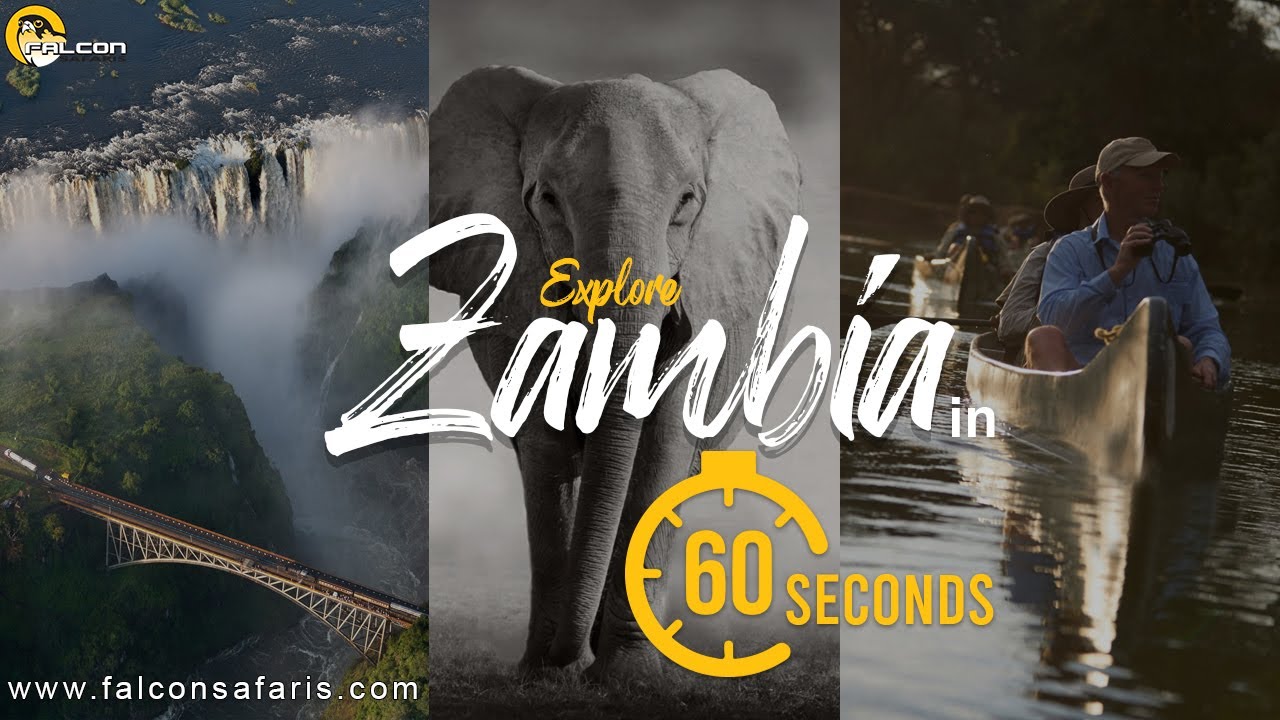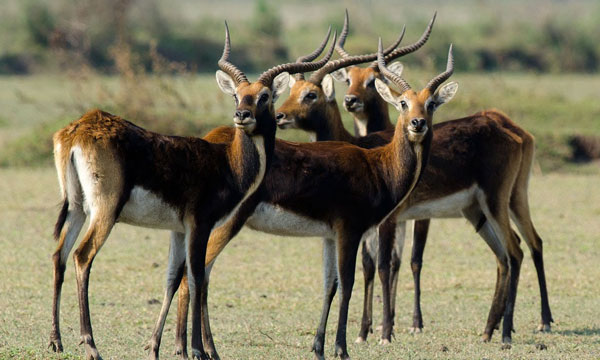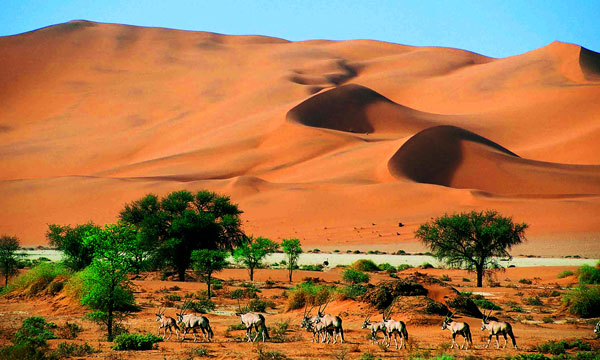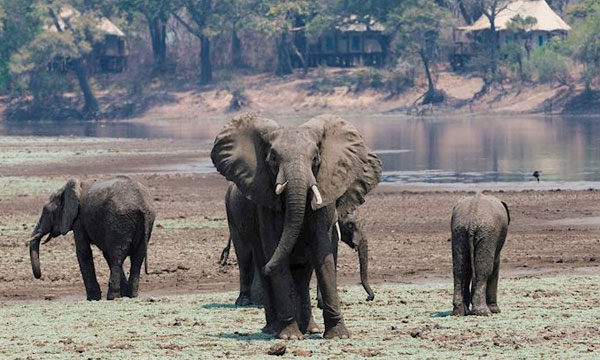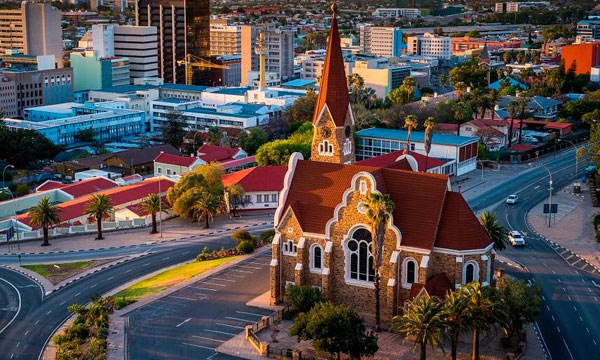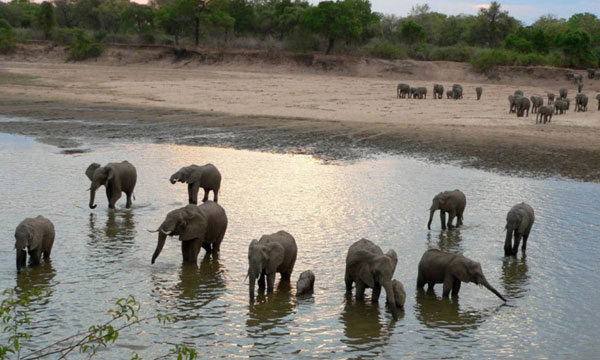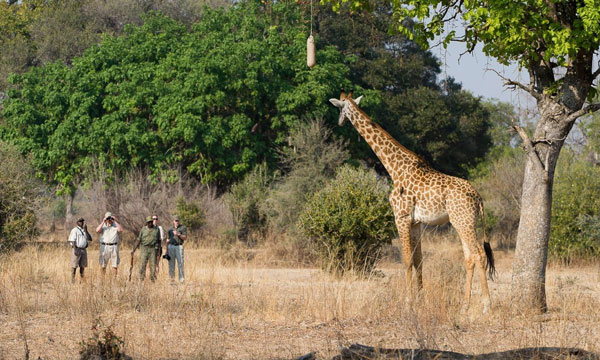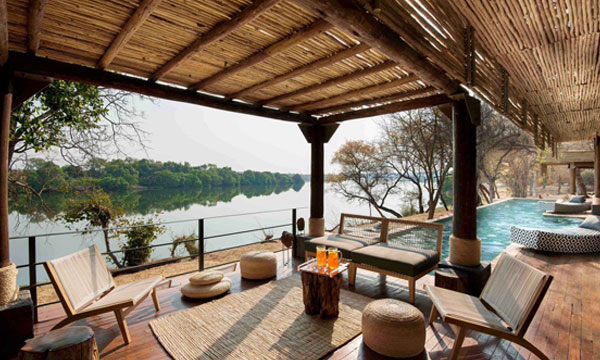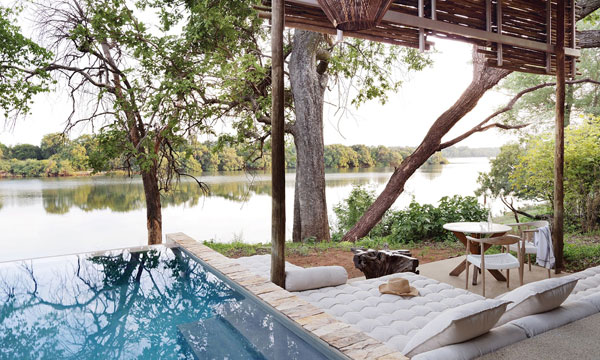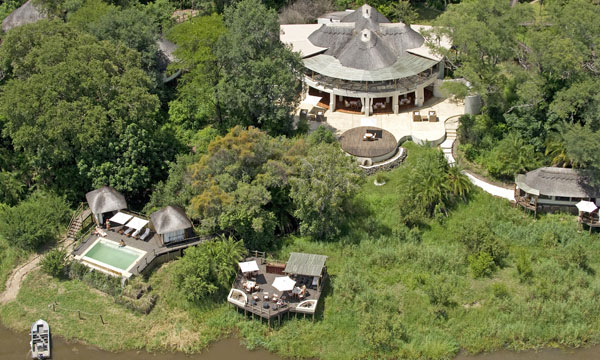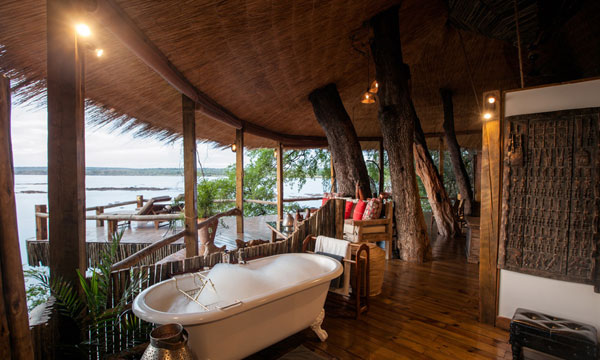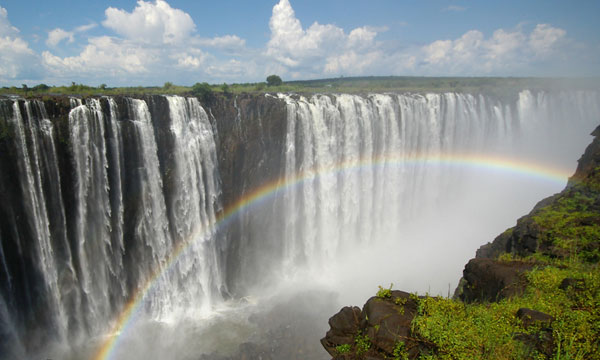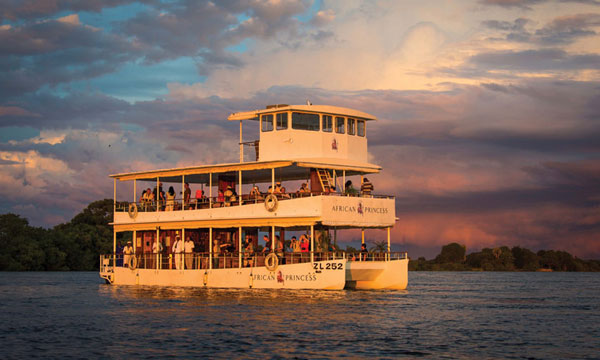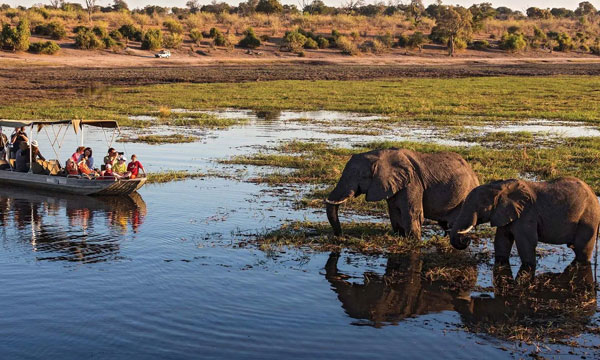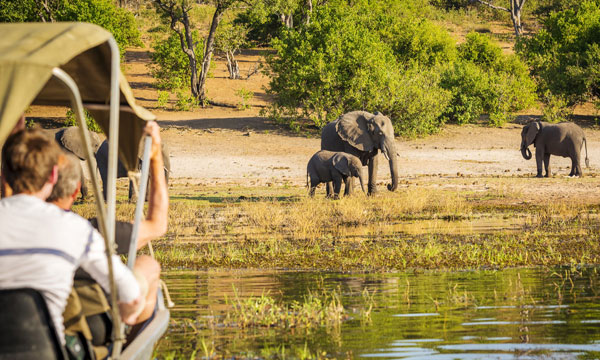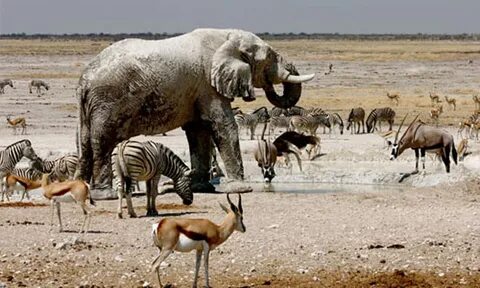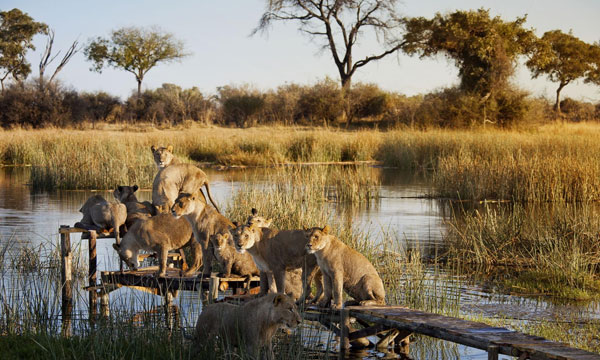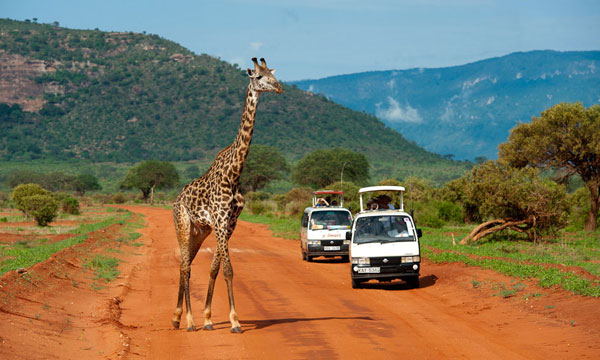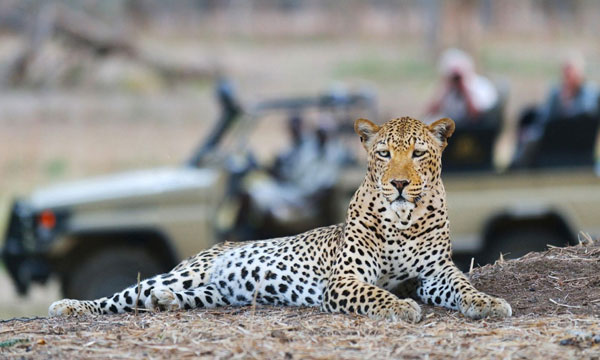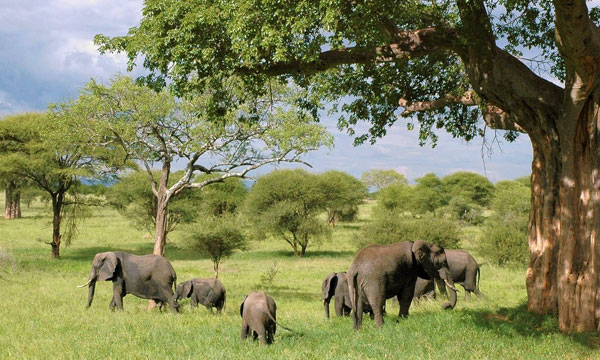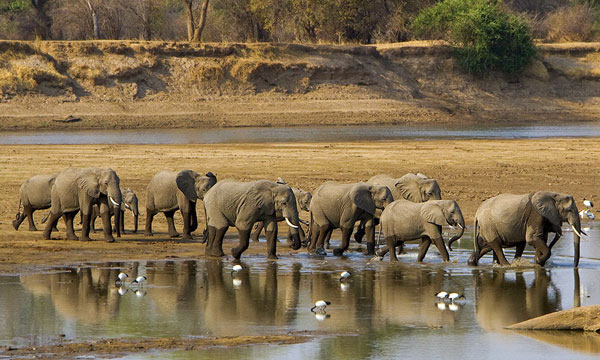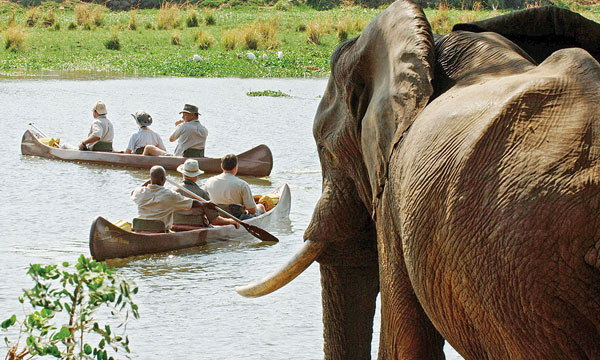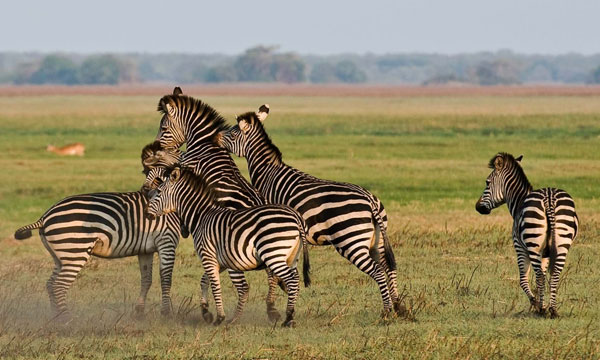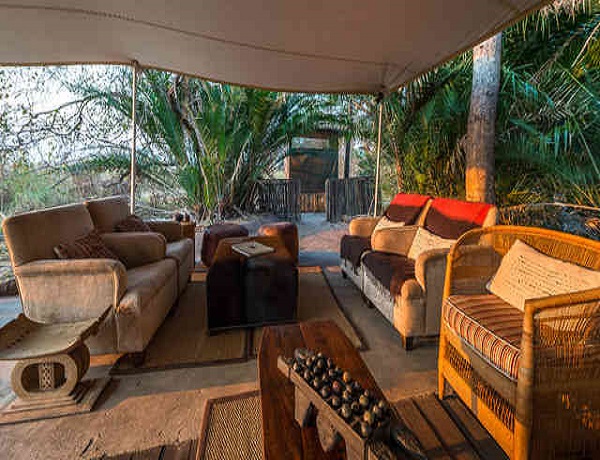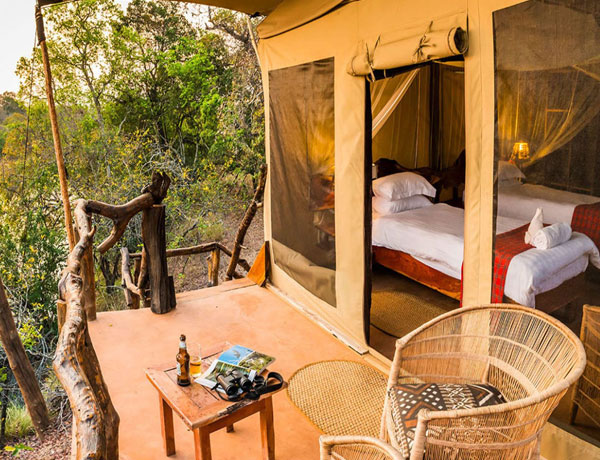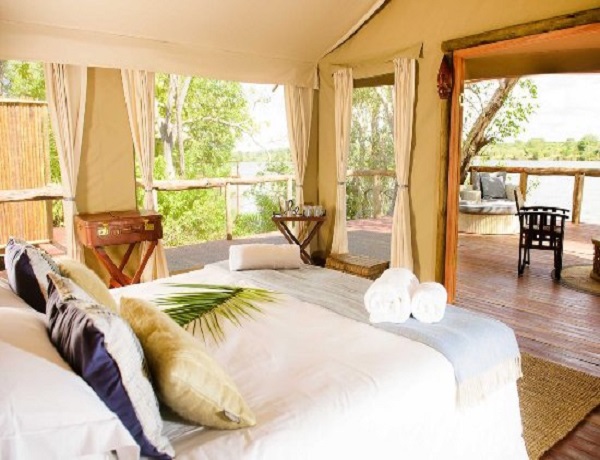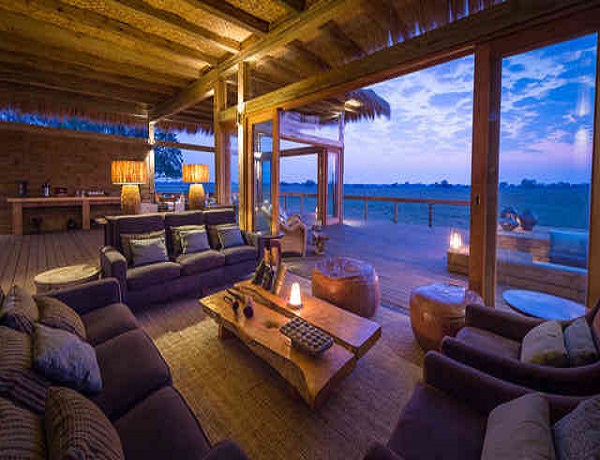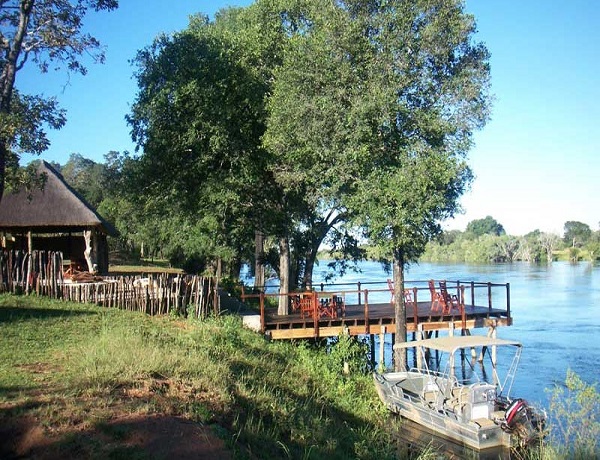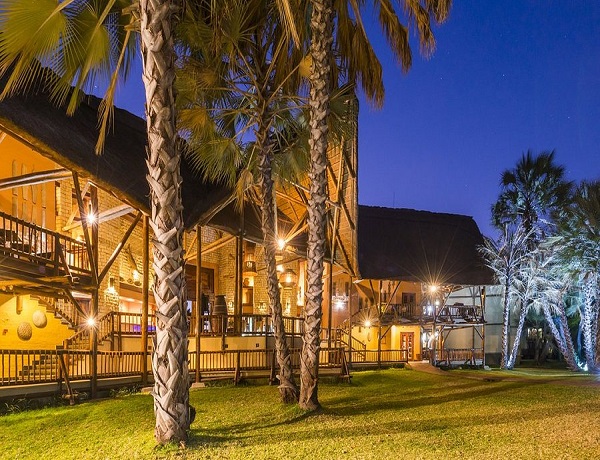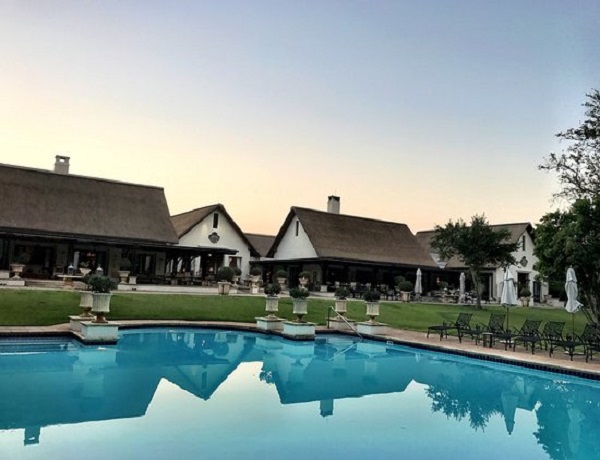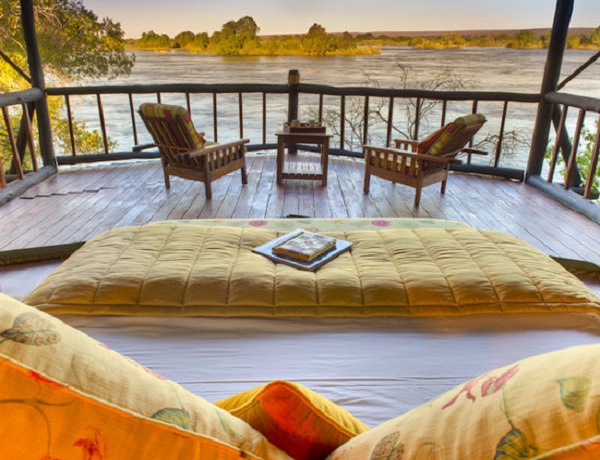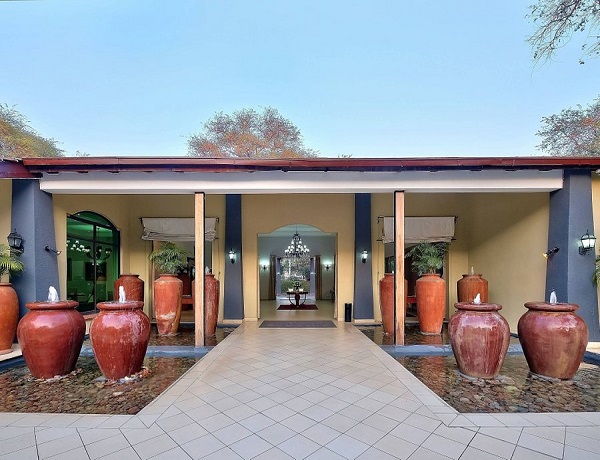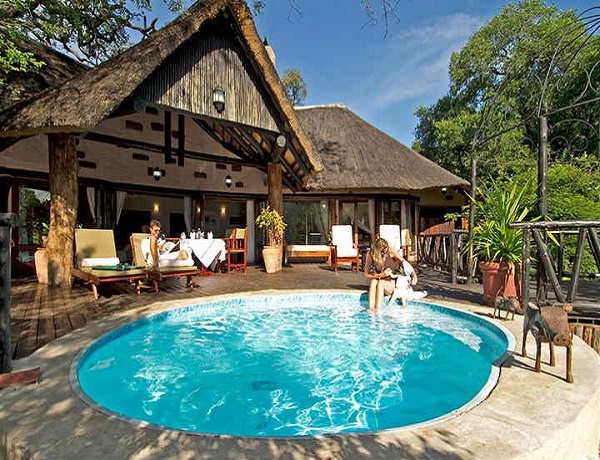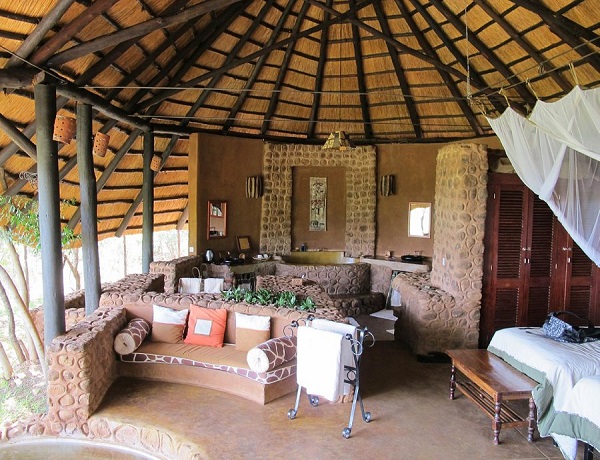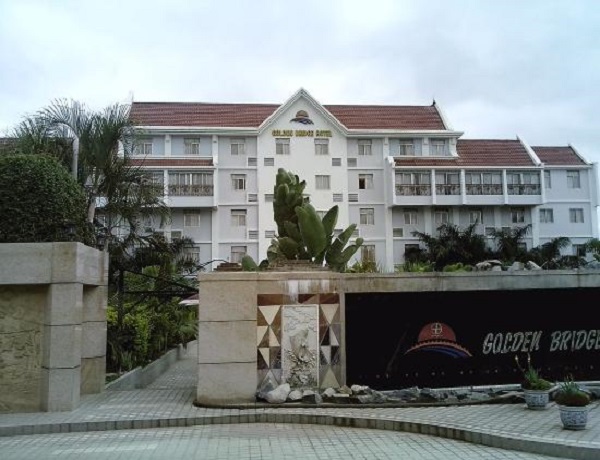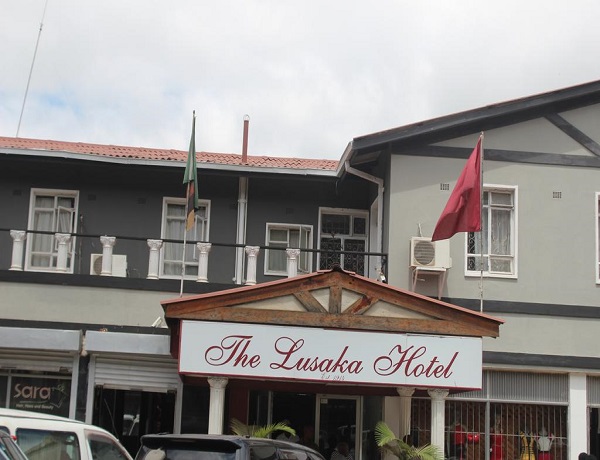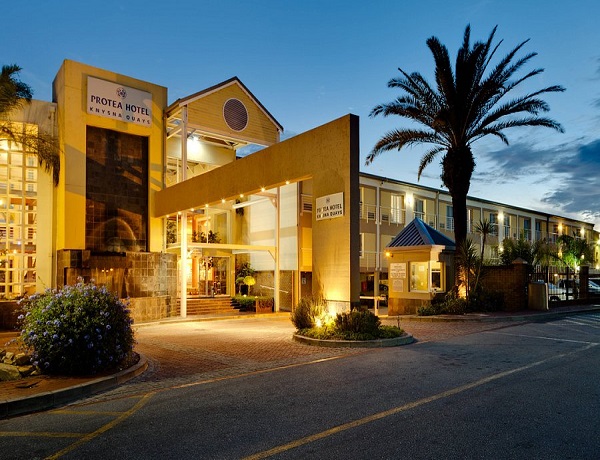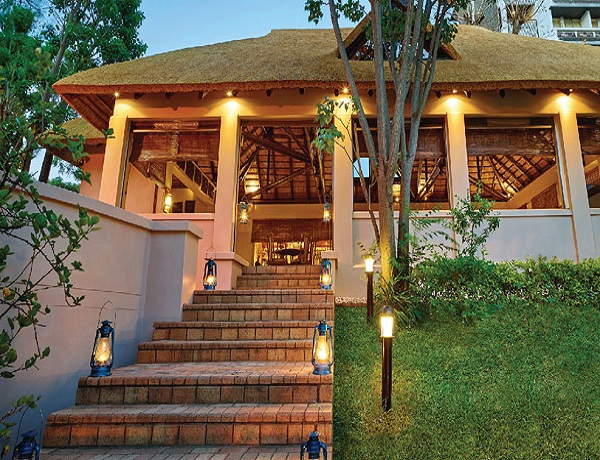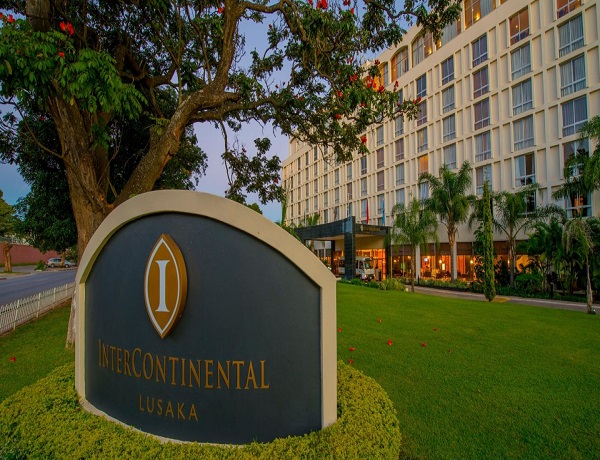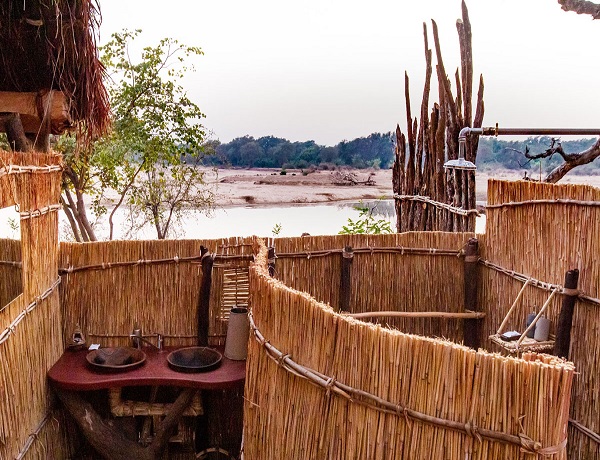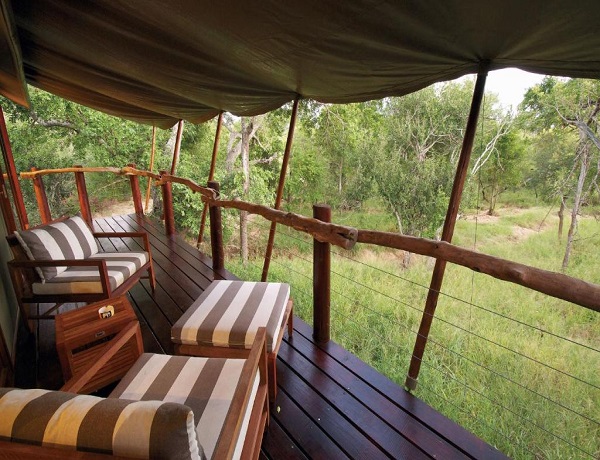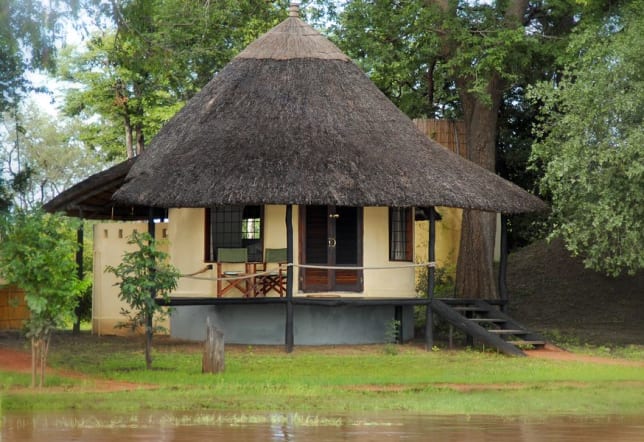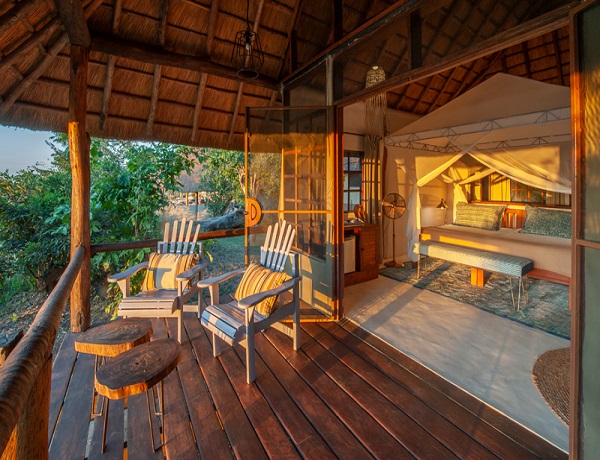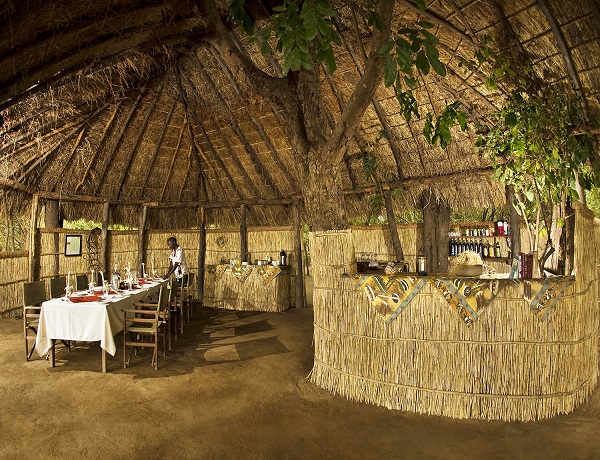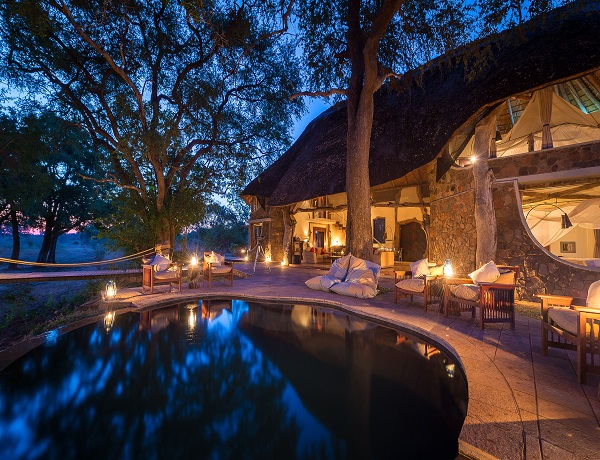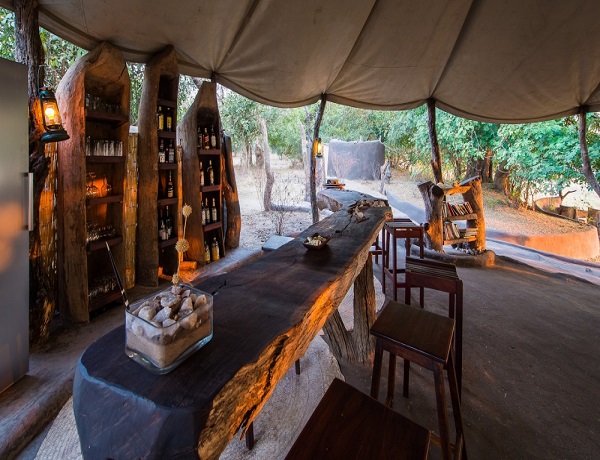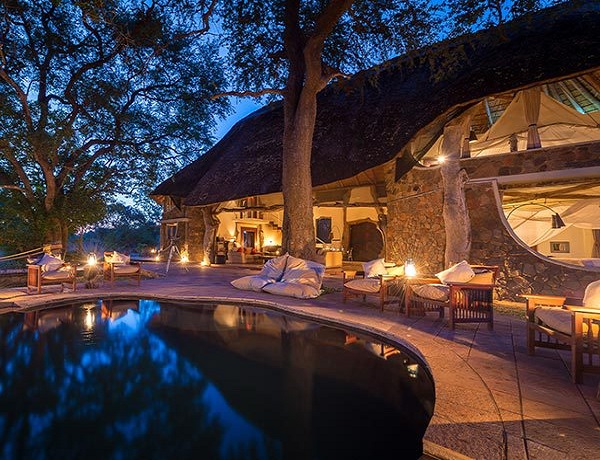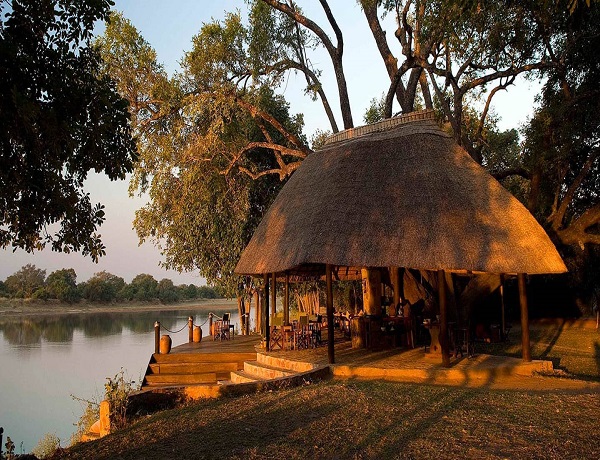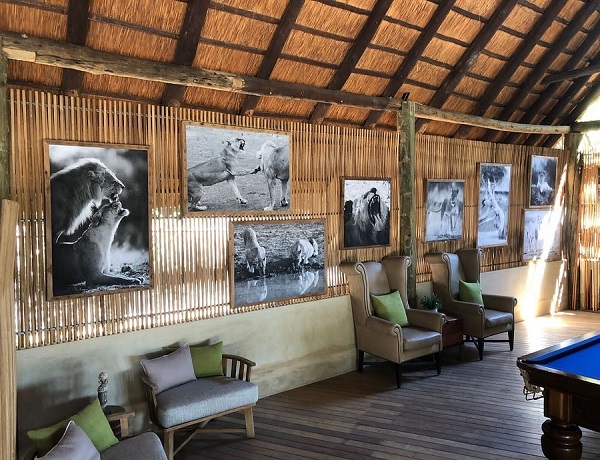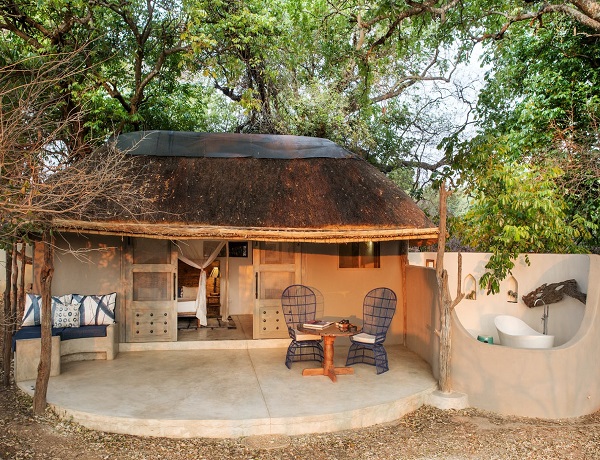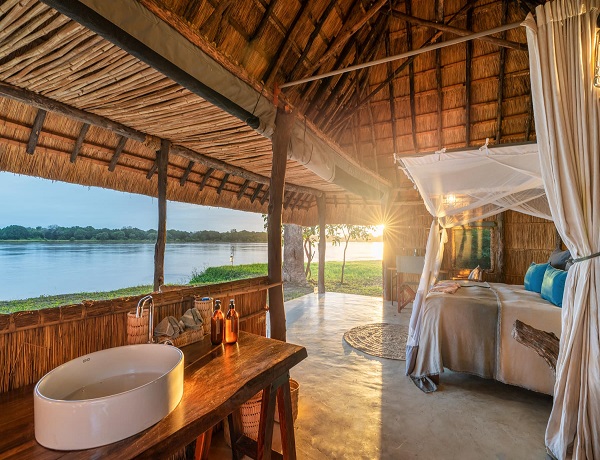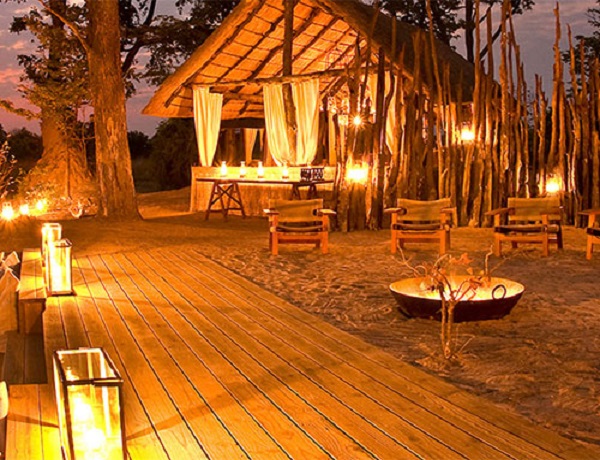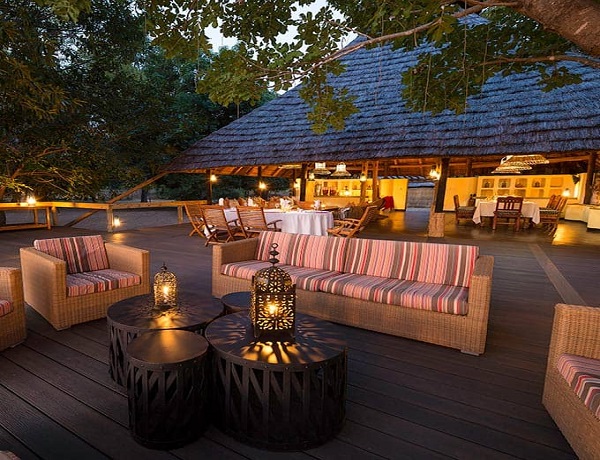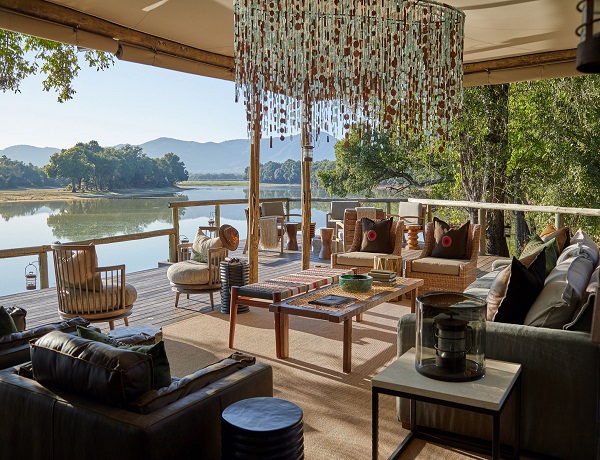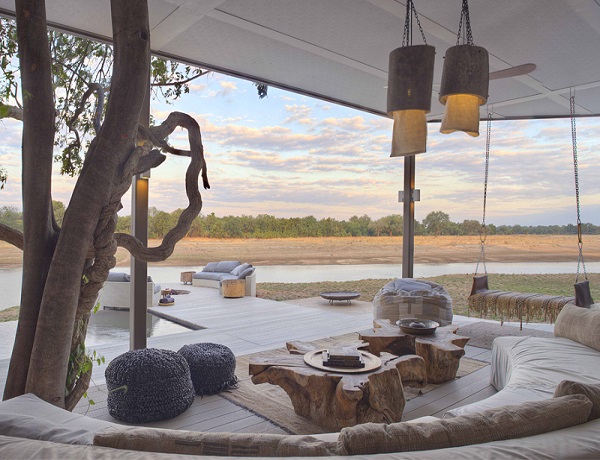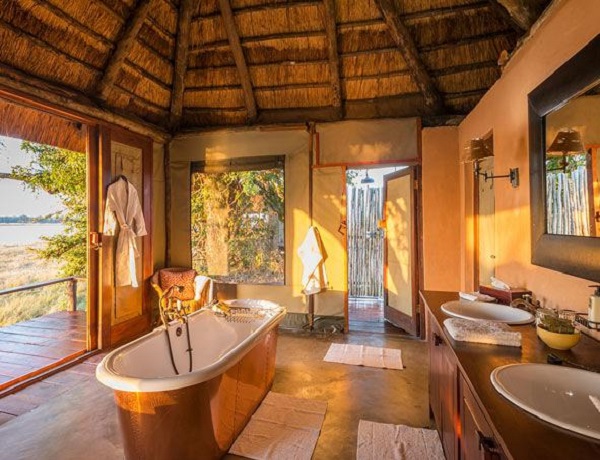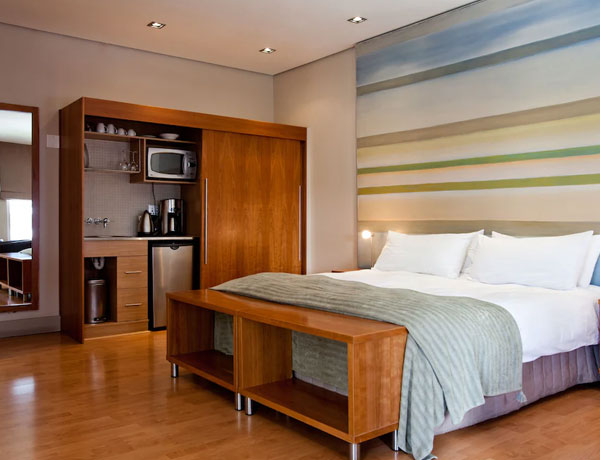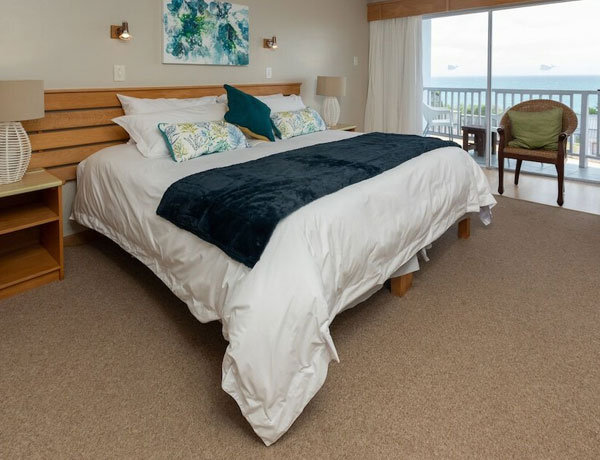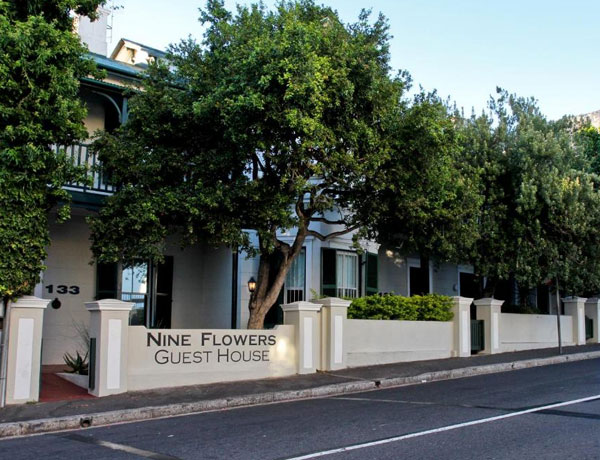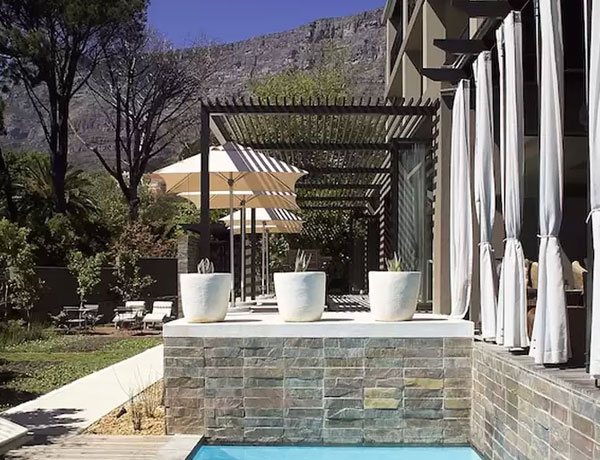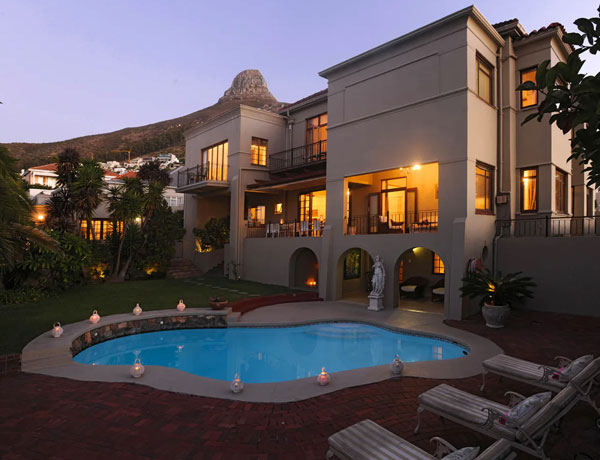Call Us
8:00am - 17:00PM
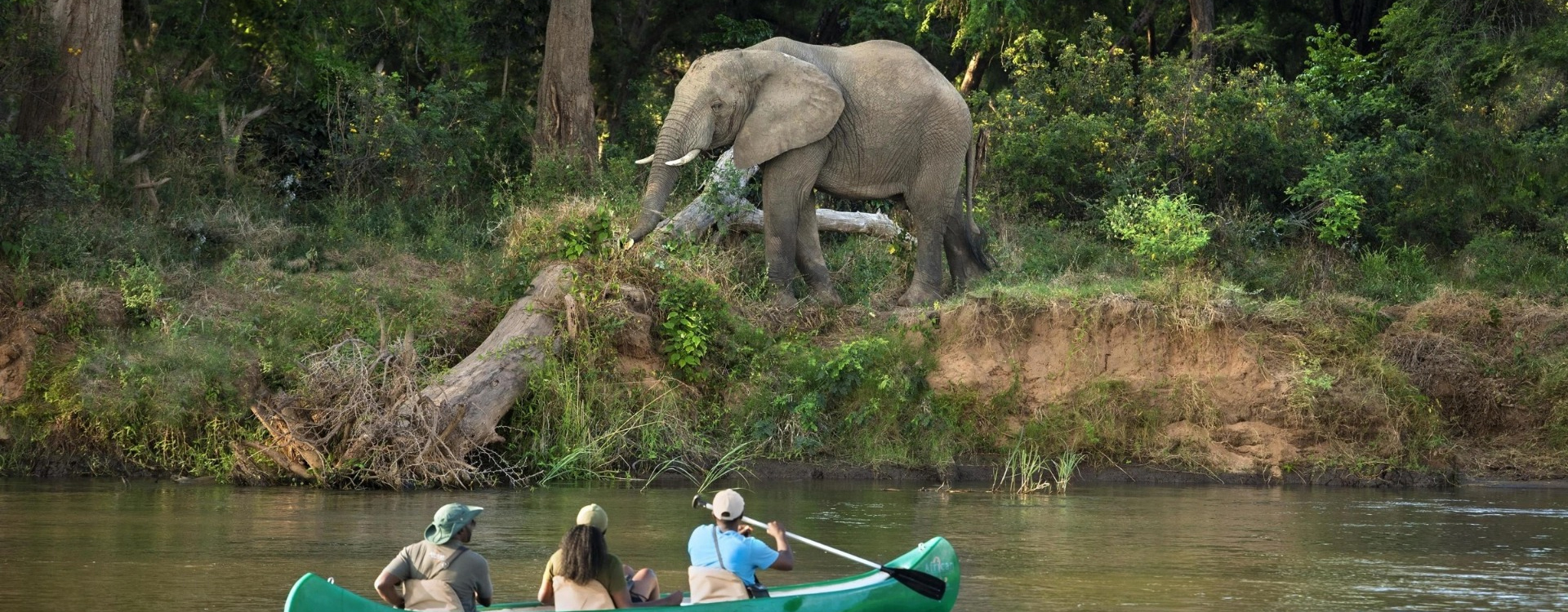
About Zambia
Welcome to Zambia. Zambia sits mainly on an expansive central plateau, and boasts the Zambezi, Kafue and Luangwa rivers – as well as one of the largest waterfalls in the world, the Victoria Falls, which it shares with neighbouring Zimbabwe. Zambia Destinations offer the undiscovered treasure trove of Africa. It shelters extraordinary natural beauty and is one of the most pristine and unspoiled wildlife havens on the continent. From beautiful Kafue National Park to historic sites like Shiwa Ngandu, Zambia offers a diverse range of travel opportunities to complete a vacation in Africa.
Zambia’s best safari destinations are Luangwa Valley, including North and South Luangwa, the scenically stunning Lower Zambezi and the vast wilderness of Kafue. For the best holiday ideas, either browse our handpicked Zambia Safaris and places to visit or simply arrange a call back today to start planning a trip completely tailored to you. To truly discover the Zambia Tourist Attractions, we’ll create a tailor-made Zambia Safari Packages. It helps to give you the options to choose between the variety of lodges and luxury tented camps, finding the perfect game viewing, locations and Things To Do In Zambia for you.
Interesting Facts

Zambia Things To Do - Walking safari, safari and game viewing activities

Zambia Tourism - inspiring natural wonders, wildlife, water bodies and open spaces

Zambia Wildlife – Lion. 87% • Wild dog. 34% • Buffalo. 83% •Elephant. 95% etc

Zambia Safari Packages - Top Most Safaris, Wildlife Tours & Activities

Zambia Safari Cost - Between $125 and $1,500 per person

Zambia Travel Facts - Location, Area, Terrain, Elevation & Geography

Zambia Travel Requirements - Visa, Currency, Travel Insurance & Packing List

Zambia Accommodations - Budget, Midrange. Luxury Camps & Lodges

Best Time To Visit Zambia - Between June and November
Zambia In 60 Seconds
Virtual Trip To Zambia
Falcon Safaris is taking you on a journey to the world’s most beautiful and fascinating Zambia Tourist Places. Get inspiration and essentials with our Zambia Travel Guide videos and biopics for your next Zambia Safari, holiday, and vacation or simply enjoy and get tips about all the beauty in the world...
Zambia is yours to discover. Choose your Zambia Travel experience and allow us to do the rest for you!
National Parks To Visit In Zambia
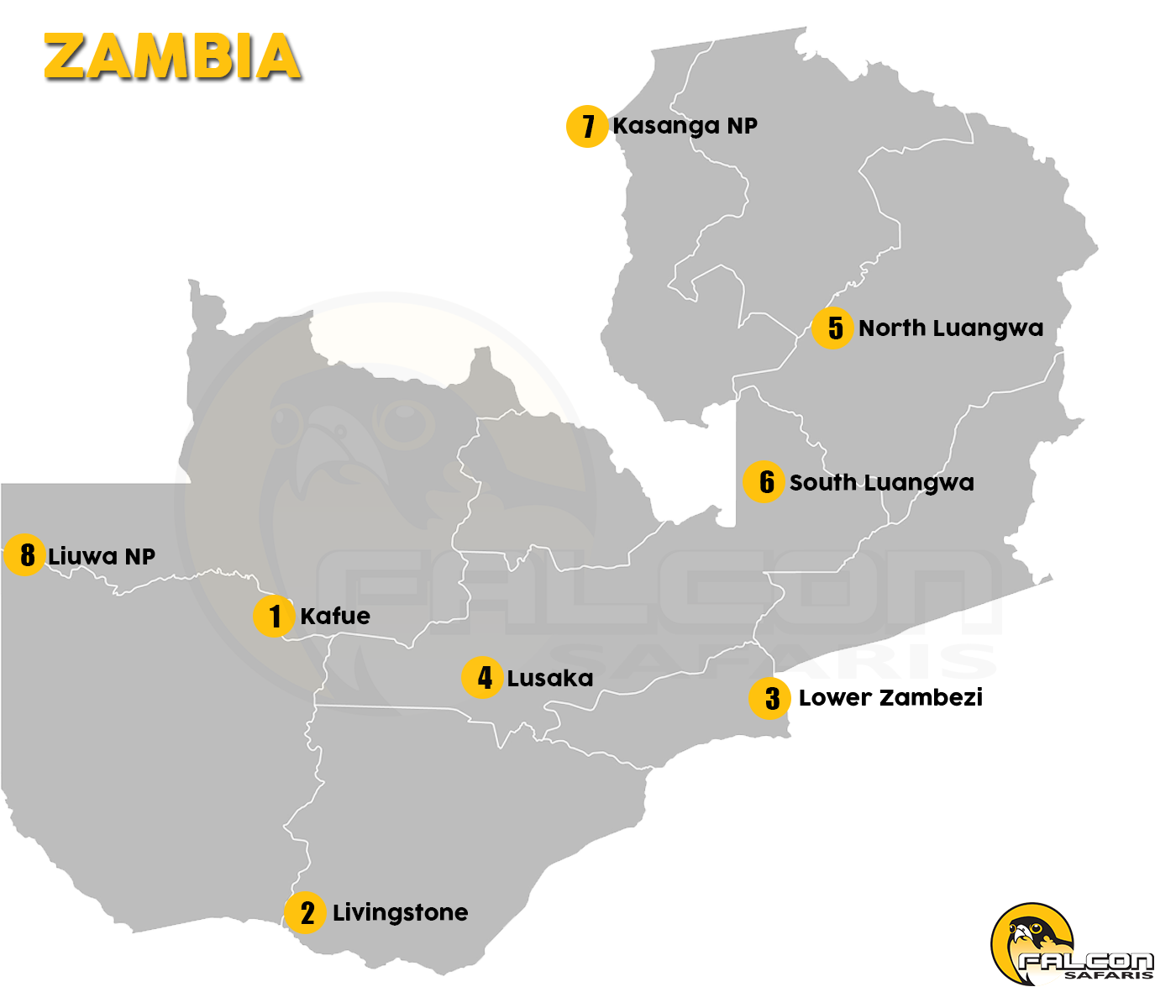
Zambia Tours and Safaris
We Think You’ll Love
Travel Guide For Zambia
We Think You’ll Love
Why Go To Zambia?
Apart from Victoria Falls, Zambia remains a mostly unknown entity even to more intrepid travellers. The natural beauty and wild landscapes of Zambia, combined with excellent big game viewing, luxurious accommodation and plenty of activities, make it one of Africa’s top destinations.
When it comes to visiting Africa, Zambia is often overlooked for the well-trodden tourist trail of places such as South Africa and Kenya. Yet, for those who want to get off the beaten track, this landlocked country has much to offer. But, if you want to explore one of Africa’s best kept secrets, you need to be fast.
Zambia has a lot going for it. Apart from being voted as the safest country on the continent to visit, it boasts some of the most unspoilt and wild landscapes in Africa. This remote wilderness provides the opportunity for game rich safaris without the crowds that so many other destinations have.
Zambia has big plans to increase tourism. Act now, before the rest of the world cottons on to this overlooked gem. So the Best Time To Visit Zambia is right now, before everyone else cottons on.
Best Time To Visit Zambia
The Best Time To Visit Zambia is during the dry season between June and November. The skies are cobalt blue, the days are hot, and the nights are cool. Temperatures can sit anywhere from 23°C to 36°C across the country. Wildlife-spotting opportunities are plentiful during this time too.
- Cool drying time: May – August
- Hot dry season: September – November
- Rainy season: December – April (South) / October – April (North)
The rains in Zambia come mostly in December, January, February and March though the further north you are, the earlier the rains arrive and the later they leave. Eastern areas and higher areas generally receive more rain than western and lowland areas. This is Zambia's 'Emerald Season' – when most camps close and many unsurfaced roads in Zambia become impassable.
By April and May most of the rain has faded away, leaving a landscape that's still green, but starting to dry out. Night-time temperatures start to drop, especially in higher and more southerly locations.
In June, July and August the nights have become much cooler, but the days are clear and warm. Make sure you bring warm clothes to wrap up if you're out at night, as some nights get very cold! Most of Zambia's small 'walking bushcamps' open at the start of June, when the roads have dried out sufficiently to allow access. This is the start of the 'peak season' for these countries – with often cloudless days and continually increasing game sightings.
Into September and October the temperatures climb: the lower-lying rift valleys – Lower Zambezi, Mana Pools and Luangwa Valley – can get very hot in October. However, you'll see some superb game as the animals concentrate around the limited water sources.
November is variable; it can be hot and dry like October, or it can see the season's first downpours. Often it's a very interesting month as you can see both patterns on successive days.
Get the Best Month To Visit Zambia for climate charts on the best wildlife-viewing times.
Flights & Getting To & Around Zambia
There are good international connections to Livingstone and Lusaka, and frequent scheduled Zambia Flights between these two major gateways. Generally, however, travel to the game parks is undertaken by private or scheduled charter.
Flights To Zambia are favoured among nature lovers who value destinations where wild beauty has the space to shine.
Scheduled Flights
There are good international connections to Livingstone and Lusaka, and frequent scheduled flights between these two major gateways. Generally, however, travel to the game parks is undertaken by private or scheduled charter.
Charter Flights
A number of charter companies run regular flights from Lusaka and Livingstone to major destinations. Charter flights are the most viable means of getting to the main Zambia National Parks, such as Kafue, South Luangwa and the Lower Zambezi. The frequency of such flights is dependent upon the season.
Most visitors to Zambia will either arrive in Lusaka or Livingstone. Being the capital, Lusaka is served by a number of international airlines, with many travellers flying here directly from Johannesburg (South Africa), Nairobi (Kenya) or Dar es Salaam (Tanzania). South African Airways, Air Namibia, Air Zimbabwe, Air Malawi, Kenya Airways and Ethiopian Airlines all fly directly to Lusaka. The airport is about 30km from the city centre and we can organise your transfers.
Flights from America can be arranged with either British Airways or South African Airways, via London or Johannesburg respectively. From the UK, there are four flights a week direct from Gatwick Airport to Lusaka and from Australia, Qantas flies to Harare in Zimbabwe and Johannesburg in South Africa, with connecting flights available to Lusaka. European airlines such as KLM, Air France and Lufthansa also fly to Lusaka, via either Harare or Johannesburg.
Daily flights operate between Johannesburg Airport and Livingstone Airport. The flight is about 90 minutes in duration and Livingstone Airport is about 20 minutes’ drive from the Falls Resort.
What To Pack For Zambia Safari
You’ve researched all the activities on offer, drooled over the camps and finally booked your flights, but now comes the tricky bit – What To Pack For Zambia and your impending safari? Once you arrive, there’s not much opportunity to buy forgotten essentials so a little bit of forward-planning when it comes to packing is worth it. Our top tips on What To Pack For Zambia Safari should be all you need and, if you remember to pack your adventurer’s cap too, you’ll be ready for the Zambia Safari Packages of a lifetime.
When on Zambia Safari, light layers of clothing in neutral safari colours of green, khaki and beige are the best items to bring with you, as well as a warmer jacket or fleece for the colder evenings. A hat is also a must have! Bright and dark colours like yellow, red and purple are discouraged, or sometimes not allowed (on a bush walk) if you are going on safari.
You’ve delayed months for your Zambia Safari Tours to finally come around. And now you have to decide What To Pack For Zambia Safari. Falcon Safaris is here to help.
The most practical items to pack for your Zambia Safari are:
- Clothes in khaki, green, beige and neutral colours
- Long-sleeved shirts that offer protection from the sun and mosquitoes
- T-shirts
- Shorts or a light skirt
- Jeans or safari trousers for evenings and cooler days
- Jackets and sweaters for early morning and late afternoon game drives
- A lightweight waterproof jacket in case of rain
- Swim and beachwear
- Comfortable walking shoes
- Sunscreen, sunglasses, a hat, insect repellent, moisturiser and lip salve
- Binoculars and camera equipment
Visa & Passport Requirements For Zambia
Foreigners who want to travel to Zambia may have to apply for a Zambia Visa beforehand, depending on their nationality.
A Zambia Visa requires a valid passport with at least 6 month validity remaining, a return flight ticket, proof of accommodation, information page scan of the passport, and a digital passport-sized photo.
If you are from one of the countries which are eligible for a Zambia Visa On Arrival, the processing time is three days. If you are from a country that is not eligible for a Zambia Visa On Arrival, the visa processing time is five days.
Upon arrival for a Zambia Safari, visitors need to present a passport valid for 6 months beyond stay and at least one blank visa page for entering and exiting stamps.
Tourist visas are valid for 3 months at the discretion of the consulate. Those travelling to Zambia for tourism purposes need to provide a flight or tour itinerary and/ or copy of air ticket. Emergency visas may be obtained at an additional fee.
Proof of Yellow Fever vaccinations only need to be presented by travellers coming from countries that are at risk.
Tourists should be issued with visas at any port of entry to Zambia except for those referred visas.
Zambia Wildlife
Like many countries in southern Africa, Zambia has a wealth of wildlife found both in and outside the parks and reserves set up to protect them. Bordered by Angola to the west, Namibia, Zimbabwe and a tiny bit of Botswana to the south, Mozambique to the southeast, Malawi to the east, and Tanzania to the northeast, it shares with them animals such as those called the Big Five: lions, elephants, buffalos, leopards, and rhinoceros, though the rhinoceros is in danger of going extinct in many areas. Zambia also has many species of birds, reptiles, and primates.
Zambia is abundant in all kinds of unique wildlife. Zambia Wildlife include primates such as vervet monkeys, bushbabies, and baboons. There are carnivores such as lions, leopards, cheetahs, hyenas, and wildcats such as the caracal, the serval, and the common genet. There are also eight kinds of mongoose, otters, and honey badgers. Zebra are found in great numbers in Zambia, as are African buffalo. There are many types of antelopes, including the roan and sable antelopes, the oribi, the waterbuck, and the lechwe. There are also rock hyrax, small mammals that look like guinea pigs but are closely related to elephants.
Snakes include dangerous venomous snakes such as the boomslang, the spitting cobra, and the gaboon viper, and many species of birds include wading birds such as flamingos, hammerkops and storks, gulls, pelicans, cranes, ducks and geese, and the ostrich, the world's biggest bird.
National parks in Zambia include Blue Lagoon National Park which is small but famous for its birds; Kafue National Park; the privately operated Kasanka National Park; the Lower Zambezi National Park; Sioma Ngwezi National Park, which is home to herds of beasts such as elephants and wildebeests who migrate to and from parks in Namibia and Botswana; and the world-famous South Luangwa National Park, which offers walking safaris.
Is Zambia Safe?
Is Zambia Safe? Zambia is, actually, generally safe to visit. It is one of the few African safe countries where crime levels are similar to those in a European country.
On the whole, Zambia is a safe country and locals are generally very welcoming and friendly towards visitors.
Follow these general rules to avoid becoming an obvious target:
- Don’t carry expensive items out in the open (cameras, mobile phones etc.) and avoid excessive, flashy jewellery
- If you’re carrying cash, keep a small, daily amount separate. Don’t pull out your entire wad of notes for every small payment
- Avoid walking alone in touristy areas, and never walk alone at night
- Move with confidence and don’t act lost – even if you are! Head for somewhere that looks reputable and ask for directions
- If you have a vehicle, don’t leave valuables visible on the seats and don’t leave it unattended at all if you have equipment strapped to the outside
- Don’t park at night on urban streets – always find safe, secure parking when you’re within city limits
Zambia Currency
The Zambian Currency is known as kwacha and is not generally available for purchase outside Zambia. The most useful currency to bring is US dollars, although South Afri-can Rand, Euro, and GB Pounds will also be acceptable.
Zambia’s currency is available at airports, hotels, ATMs and exchange offices. Larger shops, hotels, restaurants and tour operators increasingly accept major credit cards. Use ATMs or banks and bureaux de change to exchange money. It may not be possible to exchange Scottish or Northern Irish bank notes.
Most tourist businesses and some other businesses in Livingstone will accept these other currencies. With US dollars, make sure you bring new notes – the ones with “big heads”. Zambian banks don’t accept the old notes with small heads or notes that are damaged, torn or written on and so you’ll find that you can’t spend them anywhere.
There are several banks here with ATMs which issue Zambian kwacha only. Some but not all businesses accept credit cards, the most popular being Visa and MasterCard. Amex and travellers cheques are not widely accepted and some debit cards don’t work. Some businesses add an additional charge for using credit cards. US Dollars can sometimes be obtained from the local bureaux de change but it is unwise to rely on this.
Zambia Culture
Zambia Culture is a blend of values, norms, material and spiritual traditions of more than 70 ethnically diverse people. Most of the tribes of Zambia moved into the area in a series of migratory waves a few centuries ago. The main tribes in Zambia are Bemba, Nagoni, Lozi, Chewa, Chokwe, Lunda, Luvale, Tonga, and Tumbuka.
Before the colonial period, the region now known as Zambia was the home of a number of Free states. Each having comprehensive economic links with each other and the outside world along trade routes to the east and west coast of Africa. The main exports were copper, ivory and slaves in exchange for textiles, jewellery, salt and hardware.
During the colonial period, the process of industrialisation and urbanisation saw ethnically different people brought together by economic interests. This, as well as the very definite influence of western standards, generated a new culture without conscious effort of politically determined guidelines.
Many of the rural inhabitants however, have retained their indigenous and traditional customs and values. After Independence in 1964, the government recognised the role culture was to play in the overall development of a new nation and began to explore the question of a National identity.
Institutions to protect and promote Zambia’s culture were created, including the National Heritage Conservation Commission. Private museums were also founded and cultural villages were established to promote the expression of artistic talents.
Zambia Travel Insurance
Zambia offers many natural wonders to explore, and the country has good services for tourists—including many high-end hotels coming up in the recent past. A Vacation In Zambia will lend some insight into traditional African life on the one hand as you enjoy the perks of modern amenities on the other. And as you’re planning your trip, remember to buy Zambia Travel Insurance.
Comprehensive medical insurance is essential for Holidays To Zambia. It should include cover for emergency evacuation and private hospitalisation within Zambia, transfers for specialist treatment in neighbouring countries and, ultimately, repatriation. Make sure you’re covered for Zambia Safari Activities and close wildlife encounters, and any other adventure activities you plan on doing. Walking and canoeing safaris usually require special cover. Bungee jumping and white water rafting almost certainly will.
Before you travel, check with your insurance provider on how their claims process works. They may pay medical costs upfront or expect you to pay the initial costs and seek reimbursement later. Familiarise yourself with the exact documents they require from hospitals and emergency services and, if you’re expected to pay initial costs, then carry a credit card with sufficient funds.
Zambia Safari Cost
Your Zambia Safari Cost is determined by the park entry fees, accommodation choices and the duration and game drives on your itinerary. Our Zambia Safari Packages have all these inclusive of the cost.
There are many accommodation options to choose from in Zambia, but as a guide, itineraries range from around $5,500 per person up to $15,000 per person for around a week on safari. This is including internal flights. The former would be staying in more rustic accommodation visiting both the South Luangwa and the Lower Zambezi. The latter is a supreme luxury round trip covering the best lodges in Livingstone, the Victoria Falls, Kafue, South Luangwa and the Lower Zambezi. Zambia really does provide for a huge variety of budgets and groups.
What is the best month to Visit Zambia
We Think You’ll Love
Peak
Low
Mixed
Zambia in January
January is the height of Zambia’s summer rainy season and most guide books will tell you it’s the worst time to visit. By January, heavy downpours have turned Zambia’s dirt and gravel roads to an impassable mush, rivers break their banks, and many camps and lodges close completely, only reopening once the waters have subsided. Daytime temperatures average about 30°C, with nights around 20°C across most of the country.
Conditions on the ground are tough, especially if you’re driving, but not all safaris are confined to roads. Some operators in South Luangwa National Park offer fantastic boat safaris from late January to April, when the Luangwa River is high enough to explore into its flooded woodland groves. These exclusive, fly-in safaris are a fantastic way to experience Zambia’s ‘emerald season’ and South Luangwa also has a reasonable network of all-weather roads so some game driving is still possible. When the rain does fall, it tends to be brief and heavy and is more spectacular than disruptive. The dramatic skies and clear air make for excellent photographs and specialist photographic safaris are also available.
Although the rainy season is generally less productive for wildlife, that’s not to say you won’t see any. Most mammals give birth from December to March and it’s a great time to spot juveniles as they (rapidly) learn to fend for themselves. This is also by far the best period for birds across the region, but what’s food for the birds can be a nuisance for you. Be prepared for plenty of insects and don’t forget the bug spray.
Zambia in February
February in Zambia is much the same as January, with short, fierce afternoon thunderstorms, swollen rivers and washed-out roads. It can be a difficult time to visit in Zambia, unless you’re flying into a specialist lodge that operates throughout the season. These usually offer their best safari deals from January to April and will sometimes have discounts for families and children. Expect day-time temperatures around 30°C and nights falling below 20°C by the end of the month.
Zambia in March
Zambia’s wet season is nearing its end in March, but there’s still plenty of rain, especially in the north. Up north, the season lasts longer, but gradually the rains retreat from the south, first from Livingstone and then Lusaka. Hot days remain around 30°C, but the nights get slowly cooler – down to around 15°C by the end of March.
Zambia in April
Although not considered prime game-viewing season, April is an excellent time to safari in Zambia. Rates tend to be lower, the weather drier and slightly cooler, and the atmosphere clear and crisp and scattered with fluffy clouds. It’s an ideal month for photography enthusiasts and for those who want to see the greener side of Southern Africa without the afternoon downpours. Hot days will still touch 30°C, with colder nights falling to between 10°C and 15°C. By mid-April the rains have almost completely left the south, but may linger in the north into the first few weeks of May.
Zambia in May
May is arguably Zambia’s most beautiful month, with the vegetation at its lush best and Victoria Falls in full flow. By May, all of Zambia’s southern camps and lodges have reopened after the rains and across the south the dirt roads are drying, allowing self-drivers back into the parks. May is not yet prime time for wildlife viewing – the thick vegetation makes animals harder to spot. That said, Zambia’s guides are experts and guided game drives can still produce great sightings.
May is also an excellent month for discounts, with low or shoulder season rates at most camps and lodges. Late May, when the vegetation has thinned a little, is perfect for a walking safari in the Luangwa Valley. Expect lower rates and comfortable daytime temperatures, prolific wildlife and some of Zambia’s most qualified and enthusiastic guides. By now the summer rains have completely retreated and nights are cooler and far less humid. Hot, clear days may still touch 30°C, but closer to 25°C is more common in the south.
Although most of Zambia’s southern park roads are open by late May, dirt roads in the north are often still impassable. Both the Kafue River Valley and Liuwa Plain National Park can stay flooded into June, but conditions depend on the rains and vary year to year. As the floodwaters withdraw the rivers gradually clear and late May / early June marks the start of the best river fishing in Zambia.
In the magical Bangweulu Wetlands, the subsiding waters also start to make travel easier, and late May through June is the best time for shoebills. These goofy looking birds are well worth the trip, not just to see them, but for the stunning natural beauty of the wetlands themselves. At nearly 10000km2 they’re almost as large as the Okavango Delta and support a rich, varied flora and fauna, including the endemic black lechwe.
May to August are also the best months to spot the elusive leopards, nocturnal predators who generally only venture out once it’s cool. At hotter times of the year that can mean quite late in the evening, but in winter they prowl at twilight, inspecting their territory as they prepare to hunt. South Luangwa is particularly good for leopard and all the main camps and lodges offer guided evening and night drives. Sightings aren’t guaranteed, but this is the best way to see them, especially as Zambia is one of very few countries to allow spotlights on game vehicles.
Zambia in June
June marks the start of Zambia’s prime safari season, but many lodges still offer reduced ‘shoulder season’ rates so it’s one of the best months to visit. Later in the season conditions can get very hot, but June is cool and pleasant, with daytime highs not much over 25°C and nightly lows around 10°C. Pack thick socks and a warm jacket for early morning walks and game drives. And prepare yourself for one of Zambia’s best months for a walking safari.
The Luangwa Valley is Zambia’s walking safari mecca, although all the major parks offer guided walks as well. South Luangwa National Park is where it all began, however, and the region still boasts some of the most experienced walking guides in Africa. June in Zambia is cool with clear skies, and after a month or two without rain the vegetation is thinning, but not yet completely desiccated. It’s a beautiful time to walk in the parks and you’ll find a range of walking safaris available. The more adventurous can try multi-day mobile safaris where guests walk between temporary camps, through some of Zambia’s most pristine wildlife areas. North Luangwa National Park is especially wild and the few operators in its southern section are walking safari specialists.
Zambia in July
July to October is peak season in Zambia, when game-viewing is at its finest, but lodges and camps also charge their highest rates. This is this the best time to go on safari, with the thinning vegetation making wildlife easier to spot. It’s also the coldest month to visit Zambia, with daytime temperatures around 25°C in the south. Hot days can still reach 30°C, especially in the north, but expect some chilly nights and take a fleece, or better yet a windproof jacket, for early morning walks and game drives.
Across the country, July is a great time to travel. There’s zero rainfall and by now almost all the dirt roads have dried and hardened. Liuwa Plain and northern Kafue may still present a few challenges, but for the most part self-drivers can explore where they wish. Fly-ins are still available to all the major parks and remain the quickest and most comfortable (and expensive) way to travel internally.
From late July the white-water rafting season opens, although it may be a bit earlier or later depending on the rains that year. When the water is low enough the higher-grade rapids nearest Livingstone can be run and the rafts set off from just below the falls. The entry is spectacular, especially in July and August when there’s still a lot of water pounding into the gorge. The first 10 rapids are the most extreme so if you’re serious about rafting, this is the time to do it.
Zambia in August
Zambia’s peak season extends into August and the combination of cool, dry weather and increasingly thinning vegetation makes it one of the best months to go on safari. Across the country, surface water is rapidly drying and by the end of the month the animals begin to mass along the rivers, congregating near permanent water in ever increasing numbers. As pools dry, fish are trapped, and a variety of birds, including the supremely ugly marabou stork, descend for an easy meal.
Throughout August, conditions remain dry and clear. Expect cool mornings around 10°C and warm afternoons that gradually climb over 30°C by the end of the month. It’s still a good time to see leopards in South Luangwa National Park, while the evenings remain cool and they continue to begin prowling at dusk. Like July, August is a top month for walking safaris and the more popular South Luangwa camps can book out over a year in advance. With excellent game-viewing and dry dirt roads, it’s a popular month for both fly-in and self-drive safaris across all of Zambia’s parks.
Many visitors also come for the fishing – August is a phenomenal time for giant tigerfish on the upper Zambezi. A handful of excellent lodges cater specifically for anglers, and camps on the Kafue, Luangwa and lower Zambezi rivers also offer excellent fishing for bream, yellowfish, catfish and tigers. There’s great fishing on Lake Kariba year-round, but August to October are especially productive, with bigger and bigger tigerfish being caught as the season progresses.
Fishing holidays on the upper Zambezi can be combined with a cultural trip to the Likumbi Lya Mize Ceremony, which takes place near the town of Zambezi in the last few days of August. Over five days, the Luvale people of Western Zambia celebrate the passage of their older boys to adulthood, with feasts, songs and traditional dancing. The festival is particularly well-known for its colourful Makishi dancers who perform for the crowds in giant, painted masks and flamboyant headdresses.
Zambia in September
By September things are hotting up in Zambia, as temperatures rise and the increasingly water-stressed animals compete for resources. As more pools dry, fish are exposed – an easy meal for hungry eagles, storks and scavengers. Both predators and prey stay close to the rivers and lion sightings are more common as their range decreases and their movements become more predictable. By the end of September hot days can easily reach 35°C, with nightly lows of between 15°C and 20°C.
Zambia in October
October is peak safari season in Zambia – but it’s hot! Known locally as ‘suicide month’ the relentless heat hits the low-lying regions hardest, especially the Luangwa and Zambezi valleys where temperatures in the shade can reach well above 40°C. This includes Livingstone and Victoria Falls where white-water rafting is no longer just about the world-class rapids, for many it’s simply a great way to cool down. A stint on Lake Kariba is ideal at this time of year. It’s arguably the best month to catch giant tigerfish and in the deeper waters it’s also safe to swim.
Zambia in November
November is the spring ‘shoulder’ season in Zambia when many lodges offer reduced rates or close completely, mostly on account of the unpredictable weather. Nobody knows exactly when the rains will begin, but they usually start in the north of Zambia first, then slowly move south over the course of the month. Lodges with fly-in access are more likely to stay open, but even some of these shut down for the wet season. As soon as the rains set in most dirt roads become impassable and lodges replying on road transfers generally close by mid-November at the latest.
Zambia in December
December is the start of Zambia’s rainy season – generally cooler than the previous few months, but nevertheless still hot and humid. Expect daytime averages of roughly 30°C and nights down to only around 20°C. Rainstorms can be fierce, with heavy downpours rapidly turning the dirt roads to mud. Camps and lodges without fly-in access close completely and many close anyway due to flooding. Few safari operators continue through the wet season, but those that do stay open usually offer lower rates. It can still be a rewarding time to visit, especially for bird lovers, as the migrant species return in full force and the breeding season begins in earnest across the dambos and swamps.
Zambia Safari Activities
We Think You’ll Love
Birding Safaris
Zambia is home to an amazing 779 bird species. Lochinvar National Park alone is home to 428 and Luangwa Valley to 450. All park guides are experienced bird spotters, so don’t forget to pack the binoculars and the zoom lenses.
A fascinating way to spot the birds of the Zambezi area is on a canoeing safari. Drift down with the current with binoculars and checklist in hand and take it all in. Lots of excellent game sightings too. Choose from a tranquil upper Zambezi cruise just above the Victoria Falls or a wilder adventure paddle down the lower Zambezi with game parks on either side of the river.
One of Africa’s most prized birding spots is Lochinvar National Park, a small 450km2 game park on the Kafue floodplains which has 428 known species – that’s almost a different bird species for every square kilometre!
Try one of Zambia’s legendary walking safaris in the main parks. All you take is your binoculars, and your guide will ensure your safety and comfort as you spot many of Zambia’s unique species.
Canoeing Safaris
A canoeing trip down some of the quieter stretches of the Upper Zambezi is among the more relaxing ways to enjoy the Zambian safari experience and literally follow in the footsteps, or paddle strokes, of the legendary David Livingstone himself.
The Lower Zambezi Canoeing Safari has got to be the ultimate in relaxed excitement, as you canoe through the section of the Zambezi flanked by National Parks on both sides.
Sit back in your comfortable two man canoe and let the river take you along its current. Your armed River Guide will take you down remote channels between the islands in this magnificently diverse and abundant River, where your opportunities to get close to game are very high.
Hippos are always in sight, elephant, zebra, puku, impala, buffalo, kudu, waterbuck, baboons and crocodiles can be seen browsing on the banks from the laid back comfort of your canoe.
Guided Safaris
A guided safari is often the easiest and most convenient way to get up close and personal with the Zambia’s incredible wildlife. While your experienced guide shares his knowledge and finds the best viewing opportunities, you can just sit back and enjoy the ride.
Book into an exclusive bush camp, in or adjoining one of the National Parks. Get wined and dined and pampered in tasteful bush style and head out in the early mornings and late afternoons for some spectacular game viewing from the comfort of a well-padded open vehicle.
Your game guide and tracker will ensure you don’t miss a thing, and will reveal fascinating insights about all you see, from the tiniest insect, the vegetation and the seasons, to the mating behaviour of lions and the thrill of the kill.
Sit back in awe of the wonder that nature reveals when we take time to watch her ways and the symbiosis of her virgin state.
Night drives by vehicle are great evening entertainment in the bush and beats city nightlife hands down!
Mobile Walking Safaris
If the pristine, undisturbed African bush is what you are after, then it doesn’t get more raw and wild than a mobile walking safari. Zambia is one of the few countries in the world to offer this unique and unforgettable experience, backed up by a ground crew so you don’t have to carry everything with you.
This is surely the finest way to experience the “real” Africa as it was hundreds of years ago when the first pioneers ventured into the interior. Wild, wild, wild, unspoilt, untouched wilderness. Zambia is one of the few countries left in Africa able to offer this unique experience.
Your safari operator will meet you at the nearest airstrip in an open game-drive vehicle and take you deep into the bush where you’ll spend a night in a comfortable bush camp. The next morning, just as the sun emerges, you don your good walking shoes, a hat and binoculars and set off on an unmarked trail through the bush.
There is obviously no telling what you will see, but you can be sure it will alter your perception of nature as you witness the incredible symbiosis that occurs without the influence of man and civilization.
Photographic Safaris
If wildlife photography is your thing, then Zambia is the right place for you, offering an abundance of wildlife amidst dynamic, rich colours. Some operators offer specific photographic safaris, and even ‘in the field’ wildlife photography workshops.
All of Zambia’s safaris and game lodges offer superb photographic opportunities, either from a walking safari or an open vehicle. Good low-lighting conditions and rich colours abound on early morning and late evening game drives or walks.
If photography is your thing, some of the operators specialise in catering to the photographer. Some photographic safaris provide bean bags and dust covers for your camera bags. Parks such as South Luangwa National Park have great photographic hides where you can sit comfortably and wait as long as it takes for that perfect shot.
Zambia Safari Accommodations
We Think You’ll Love
Kafue
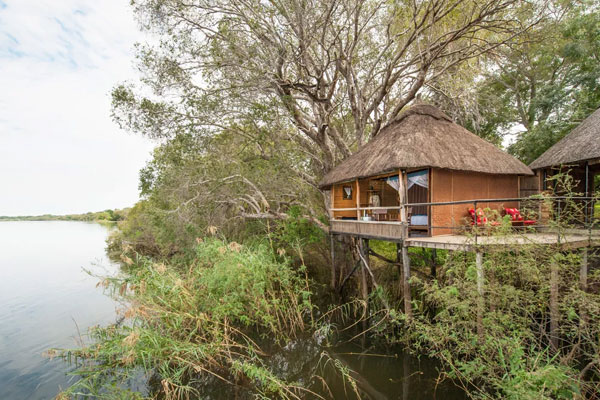
Kafue National Park is an icon amongst Zambia’s National Parks. It was established as a national park during the 1950’s and covers an incredible 22 400 km2. Kafue National Park lodges vary from remote tented camps to luxurious safari lodges. There are accommodation types to suit all budgets and tastes. These safari lodges or tented camps will provide the base for an incredible Kafue safari where the huge variety of birdlife (490 recorded) and large herds of red lechwe, puku antelope, wildebeest and antelope are constantly watched by big cats, spotted hyena and wild dogs.
Livingstone
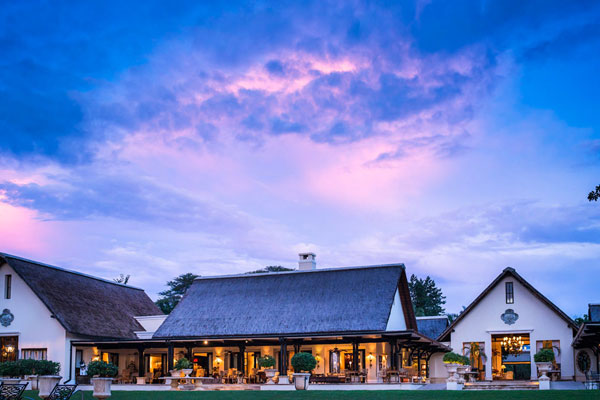
Livingstone and environs offer stylish lodges and hotels, as well as a wide range of accommodation options to use as base for exploring the area – including bed & breakfasts, guesthouses and backpackers. Some of the accommodation in Livingstone is located within the town while there are quite a few options on the banks of the upper Zambezi River as well as close to Victoria Falls and on the edges of the Batoka Gorge, on the Zambian side. Some of these spectacular outdoor activities that attract tourists to the town of Livingstone.
Lusaka

Zambia’s capital, Lusaka, is one of the fastest growing cities in central Africa with new buildings, shopping centres and chain stores regularly popping up. Accommodation options are varied and spread out across the metropolis. The city centre bustles with roadside stalls in the day and at night offers a wide range of restaurants, night clubs and bars. Visitors can also choose to stay on the outskirts of town in country lodges. The level of choice in accommodation in Lusaka is forever increasing as the city rapidly expands.
North Luangwa
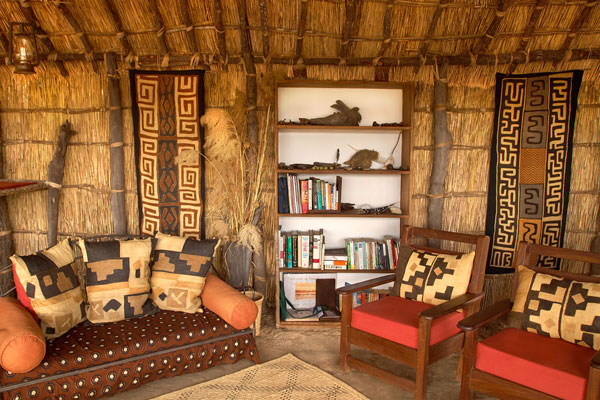
From luxury accommodation to state-of-the-art conferencing venues and world-class dining options, where better to make your Home Away From Home than Lagoon Beach Hotel & Spa. Situated on Lagoon Beach, with Cape Town’s central business district only minutes away on the Hotel’s free scheduled shuttle bus, not only do you have the beach on your doorstep, but also the eclectic vibe of city life. We welcome you to relax in one of our deluxe rooms where you’ll be sure to experience true luxury and comfort with direct access to the very best of Cape Town.
South Luangwa
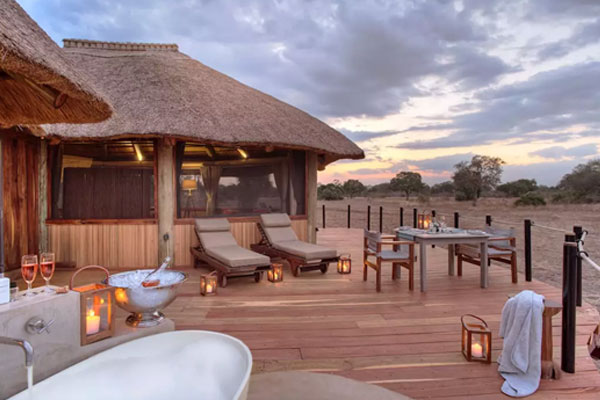
Accommodation in the South Luangwa National Park ranges from luxury safari lodges to comfortable tented camps - enough to suit all tastes, budgets and trip types. If you're looking for a unique walking safari experience or an off-the-beaten-track big game safari, our selection of South Luangwa accommodation is sure to inspire you and will make planning your Zambia safari so much simpler. From luxurious lodges to tented bush camps, the wide variety of lodging in South Luangwa National Park offers even the most discerning traveler a comfortable place to rest.
Lower zambezi
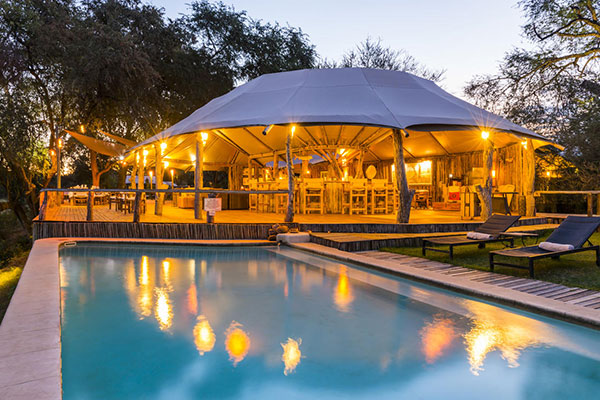
Accommodation in the Lower Zambezi National Park ranges from off-the-beaten-track tented camps to luxury safari lodges - enough to suit all tastes, budgets and trip types. If you're looking for a thrilling big game safari in Zambia, our selection of Lower Zambezi accommodation is sure to inspire you and will make planning your Zambia safari so much simpler.
Frequently Asked Questions Zambia
We Think You’ll Love
Zambia is famous for pioneering the walking safari. Some say Zambia is the best kept secret in Africa, an undiscovered mecca for a variety of safari and game viewing activities. It is a raw slice of Africa friendly and with many unspoilt wild places worthy of any pioneer!
The Best Time To Visit Zambia is during the dry season between June and November. The skies are cobalt blue, the days are hot, and the nights are cool. Temperatures can sit anywhere from 73°F to 97°F across the country.
Yes, Zambia is undeniably one of the continent's best safari destinations. Kafue National Park is of particular interest to wildlife enthusiasts, home as it is to an abundance of impressive creatures, from leopards and lions to elephants and pangolins.
The mid-range Zambia Safaris which are typically comprised of mid-range accommodation may cost from $300 to up to $700 a day depending on the level of comfort offered in the tented camps or lodges. The luxury safaris can range from $700 per day to more than $1,200 per day.
Technically Zambia has all the Big Five, but rhino are extremely rare and confined to the Mosi-oa-Tunya (Victoria Falls) and North Luangwa National Parks. Elephant, buffalo and lion are common across multiple parks however, and Kafue, South Luangwa and the Lower Zambezi are all well-known for leopard.
The official national animal of Zambia is the African fish eagle. This eagle looks very much like North America's bald eagle, but its white feathers extend down to its chest.
We are thrilled to help you plan your perfect safari holiday
We'd be delighted to help you with any questions you have about properties & safaris. Please fill in the form below so that we can help you create your perfect safari holiday.
Or
Contact Us
Feel free to give us a call or send us an e-mail:
Start Planning Your Tailored African Safari

Expert Safari Knowledge
With decades of expertise, we're your trusted safari guides, ensuring every moment exceeds your expectations.

Tailor-made African Safaris
Tailored to your preferences, our African Safaris guarantee an adventure perfectly suited to your desires.

Long-term Relationships
Our enduring partnerships across Africa provide exclusive access and authentic experiences.

Carefree Travel
Leave your worries behind and accept carefree travel with Falcon Safaris, where every detail is handled to perfection.
Our Travelers Say

We travelled with Falcon Safaris in Zimbabwe and Botswana for 16 days. Falcon designed a wonderful trip with private guide to the most interesting sites in both countries. The organization of the whole trip was excellent, flights within the country, accommodation and activites. The guides were very knowledgable and told us a lot about the countries, their history, people, economy and much more. We visited the Great Zimbabwe Ruins, the Victoria Falls Tour and a number of national parks in both countries.
Rhino tracking was a real adventure! We had tremendous further game drives and saw very many animals - we did the Big Five. We had much more Victoria Falls Activities than planned and enjoyed very much.We strongly recommend Falcon Safaris to everyone planning a trip to Southern Africa and East Africa.
Wonderful trip to Zimbabwe and Botswana with excellent organization and very competent guides

Our Consultant Vimbai was very helpful and accommodating. We stayed at the Elephant hills hotel which was nothing short of amazing.Our activities included a helicopter flight, dinner cruise as well as a morning game drive. All the activities were absolutely amazing.
Exceptional!

We worked with Gertrude to schedule and organize everything and she did an excellent job. I asked a lot of questions via e-mail and she answered everyone in a timely helpful manner. Our guide at Victoria Falls was also great. He met us at the airport, provided a thoughtful tour of the Falls and got us to our next guide in Botswana. Our lodgings at River View Lodge were just as described- very comfortable and excellent food. All the staff were so pleasant and helpful. If I had to do it again I would arrange a morning boat ride as well. We only did the sunset boat rides and they were the high point of our entire trip- we saw so many animals and our guide was very knowledgeable. Just a great experience. Our lodgings at Oddball's Enclave was rustic and we loved it. So great to disconnect from the world for a bit. Leo, our guide, was the best - got us out and about, saw fantastic wildlife and got back to camp safely each time. Doc manages the camp so well. This whole trip was planned and organized by Falcon Safaris and we could not have been happier.
Fabulous, well planned trip

Falcon safaris have given my the correct advice with excellent service. The only suggestion will be to work closer with the lodges to confirm bookings as soon as possible. We have booked and pay our deposit a year in advance. We have only receive our final convermation from Chobe Safari lodge a week before departure. I do realize its not within your controle but with limit alternatives and a group of 14 people it becomes an issue to find alternative accomodation if the booking was cancelled.
Excellent and efficient service
Explore Our Africa With Customize Your Tour
We love Africa's diversity and create amazing trips for you. With 30+ years of experience, we customize every trip just for you.


